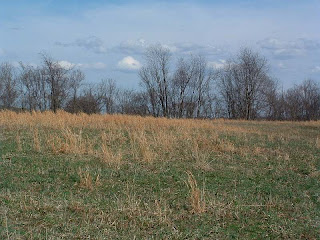Hi all. This week I'm debuting a new series that focuses on invasive species and their impacts on the Captina Creek watershed. An invasive species is one that has been transplanted to a non-native habitat from other areas of the world usually unintentionally. One of the most famous invasive species in the eastern US is the lake Erie zebra mussel transplanted from Eurasia by ballast water in shipping vessels. If the transplanted species is able to survive and reproduce in its new habitat it will begin to occupy space and compete with native species for resources often with few limiting factors (predators, disease, etc.). Invasives can take on a variety of forms ranging from fungal, to plant, to animal with one commonality - they are extremely disruptive and crippling to the balance of native ecosystems. To date, the majority of the invasives identified in the watershed have been plant variants but animal invasives do exist.
Part 1 of this series features an invasive in Captina that has become more widespread over the last five years and poses a threat to trees and shrubs - especially those in forest margins and edge areas. Oriental bittersweet (
Celastrus orbiculatus Thunb.) is a perennial species of vine that has invaded the eastern US from the far east (China, Japan, Korea). It was introduced as an ornamental plant in the 1860's and easily escaped from gardens and old home sites into the surrounding landscape. Once established at the base of a tree or shrub the vine will quickly overtake the native vegetation by encircling and climbing into the canopies. In some cases, the vine wraps so tightly around the tree it ends up girdling the tree leading to death. The vines can be heavy as well weighing down and collapsing branches, and can cover over tree leaves outcompeting the native vegetation for sunlight.
What makes oriental bittersweet so threatening is its ability to aggressively reproduce and spread via seeds and a shallow underground network of roots called rhizomes. Simply cutting the vine at its base stimulates the production of plant growth hormones that trigger the rhizomes to send up new stolons (shoots) by the dozen! Having this reproductive capacity enables the vine to dominate forest margins along fields and utility right-of-ways in short time. Currently there are no known consumers of oriental bittersweet in the eastern US making it that much more of a threat. Eradicating the vine is time consuming and often involves repeated application of woody herbicides to the stolons.
 |
Oriental bittersweet leaves are some of the last foliage
to fall making the vines easy to identify across a
landscape. The leaves are serrated on their edges and
are arranged alternately on the vine. |
 |
Green leaves turn a bright yellow in autumn making for
easy identification. The red circles higlight the girdling
effect of the vine on this tree. If left unaltered the vine
will essentially strangle the tree. This vine didn't exist two
years ago. |
 |
A closeup of the vine's seeds which are readily
consumed and distributed by birds making control
that much more difficult. A single vine can produce
hundreds of seeds per growing season. |

































